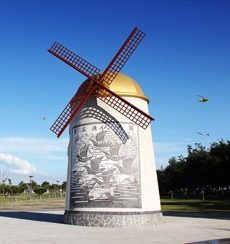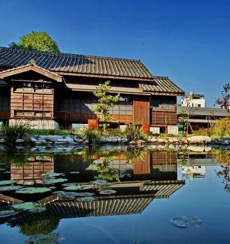搜尋結果
PatternDynamics is a simple tool that can be learned by anyone to overcome the challenges posed by complex systems–at any scale. Here’s how it works: The key to complexity is systems thinking; The key to systems thinking is Patterns; and, The key to using Patterns is to form them into a language. Winton’s language of visual patterns to ...
This is the difference with parallel villages. Its about fulfilment, not sustainability. Sustainable is a given, but not the goal. If we can cause such places to come into being, it makes the developer’s life much easier, as naturally we can expect very high sales demand for such homes and workplaces – especially if we can make them affordable.
- Context
- Definitions
- Characteristics
Robert Levin: " technological change continues to occur, in part because competing organizations often need the competitive advantage which new technology can provide. So we can be certain that, over time, more and more basic goods will become less and less scarce. With these changes, it becomes increasingly important to understand how human beings...
agalmics (uh-GAL-miks), n. [Gr. "agalma", "a pleasing gift"]: The study and practice of the production and allocation of non-scarce goods. agalmic actor, n.: An individual or organization engaged in agalmic activity. agalmic software, n.: Computer software written and distributed as an agalmic activity. agalmia, n.: The sum of the agalmic activity ...
Robert Levin: "To understand human behavior, we must find clear examples to study. Agalmic behavior involves the exchange of non-scarce goods, goods which can be found in the modern free software community. As we examine agalmic behavior, we'll frequently use examples involving free software. We can observe the following characteristics of agalmic ...
Bio. “Arran Gare is Associate Professor (Reader) in Philosophy and Cultural Inquiry at Swinburne University, and founder of the Joseph Needham Centre for Complex Processes Research. The focus of his research is transforming culture to create a global ecological civilization. He has published widely on environmental philosophy, process ...
Description. "Agriculturalism, also known as the School of Agrarianism, the School of Agronomists, the School of Tillers, and in Chinese as the Nongjia, was an early agrarian Chinese philosophy that advocated peasant utopian communalism and egalitarianism. [1] The Agriculturalists believed that Chinese society should be modeled around that of ...
Incas. From the Wikipedia: "The term 'ayllu' refers to a grouping of indigenous people of South America and has been translated as clan. The term represents a group based on assumed blood-ties which operates as an economic and social unit. The Inca Empire was essentially a number of Andean ayllus controlled by a few Inca ayllus.
One Earth presents a novel biogeographical framework called Bioregions 2020, which builds upon the world’s 846 terrestrial ecoregional divisions (Dinerstein et al. 2017) to delineate 184 discreet bioregions. Two years in development, with input from an array of field scientists, conservation experts, and geographers, the Bioregions 2020 ...


























